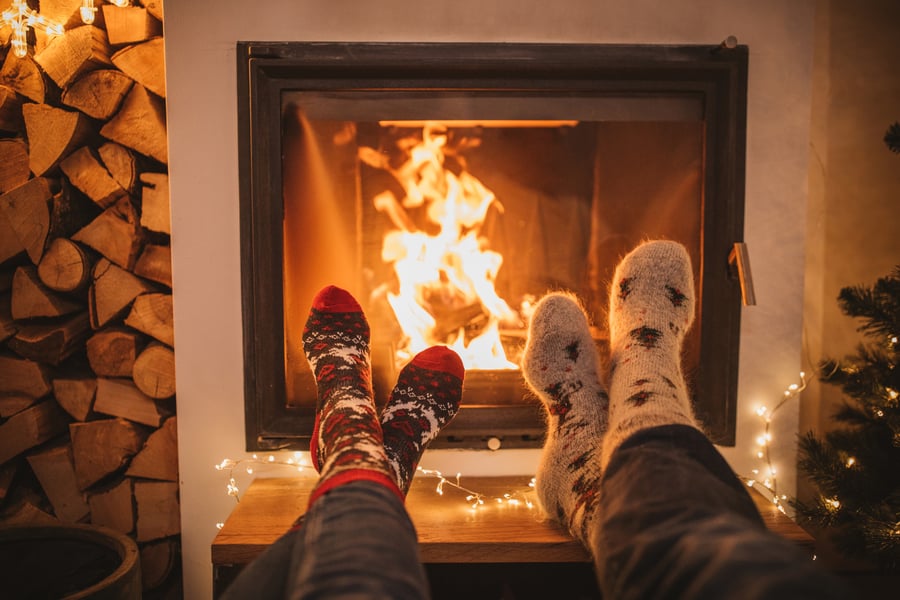A guide to help you prepare for and deal with common issues related to snow, wind, or flooding.
All information given in this article is given as guidance to ensure that your LPG installation stays safe, and deliveries can continue as smoothly as possible during extreme weather conditions. You should only follow the guidance given if it’s safe to do so.
The Great British weather has always been a talking point in this country, but recent years have seen a dramatic change in our weather patterns - with longer periods of severe rain, strong storms and isolated snow or ice.
At Flogas, we work hard in any weather to keep doing energy right by you - the below have a few tips that you can try and do to keep your unstallation safe. But our team is always on hand should you need any further advice.
General advice for extreme weather
- If you're a Manual ordering bulk customer, or a gas bottle customer, order your gas earlier if severe weather is forecast, as there may be delivery delays due to blocked or unsafe roads.
- Keep an eye on local weather and traffic advice.
- Register for flood alerts from the Environment Agency, as melting snow can cause flooding in some areas.
Snow and freezing temperatures
Preventative measures
- Keep your tank lid and shroud clear of snow and ice, as this can affect the pressure and performance of your gas supply. You can use a broom or a soft cloth to gently remove any snow or ice, but do not use any sharp or metal objects that could damage the tank.
- Check the route to your tank and make sure it is safe and accessible for the delivery driver. Remove any snow or ice from the driveway, steps, or paths, and mark any potential hazards, such as fish ponds or drains, that may be hidden by snow.
Issues
- If the route to your property is blocked by snow or ice, please let us know as soon as possible, so we can reschedule your delivery.
- If you notice any signs of frost damage to your pipes or installation, such as cracks, leaks, or rust, please call our emergency team immediately, as this could pose a serious safety risk.
- If your gas supply is not working properly, check the pressure gauge on your tank and make sure it is above the minimum level. If it is below the minimum level, you may need to order more gas or request a top-up. If the pressure is normal, but you still have issues, please call our emergency team for assistance.
Wind
Preventative measures
- Remove any overhanging branches or trees that could pose a risk if strong winds bring them down onto your tank or gas bottles.
- Secure any loose objects such as trampolines, fence panels, or garden furniture in your garden or around your property that could be blown away or cause damage to your tank.
- Check your tank regularly for any signs of damage caused by wind, such as dents, scratches, or loose fittings.
Issues
- If your above-ground tank hood or shroud is damaged or missing, please do not worry, as this will not affect your gas supply. We will replace it as soon as we can, but we will not be able to prioritise this repair, as this is not a high-risk issue.
- If your underground tank lid is damaged or missing, please call us as soon as possible, as this could affect the safety of your gas supply. We will send a technician to replace the lid and check the tank for any other issues.
- If your tank is damaged by wind, such as dented, punctured, or leaking, please call our emergency team immediately, as this could pose a serious safety risk.
Rain and flooding
Preventative measures
- Check the drainage around your tank and make sure it is adequate and clear of any debris or blockages. If you are concerned about the drainage or need advice, please speak to us or a drainage contractor.
- If your area is prone to regular flooding, order your gas early and keep your tank as full as possible, as this will reduce the risk of running out of gas or your tank shifting in floodwater.
- Remove any water or mud from your tank shroud, as this can affect the pressure and performance of your gas supply. You can use a sponge or a cloth to gently remove any water or mud, but do not use any sharp or metal objects that could damage the tank.
Issues
- If your tank or bottles are submerged or partially submerged in floodwater, please do not attempt to use your gas supply, as this could be dangerous. Please call our emergency team as soon as possible, as we will need to inspect and test your tank or bottles before you can use them again.
- If you have any issues with your gas supply after a flood, such as low pressure, poor performance, or strange noises, please call our emergency team on 03457 200 100 for assistance. We can often advise over the phone, or can send a technician to check your tank and equipment and make any necessary repairs or adjustments.
- If the route to your property is flooded or unsafe, please let us know as soon as possible, so we can reschedule your delivery or arrange an alternative solution.



